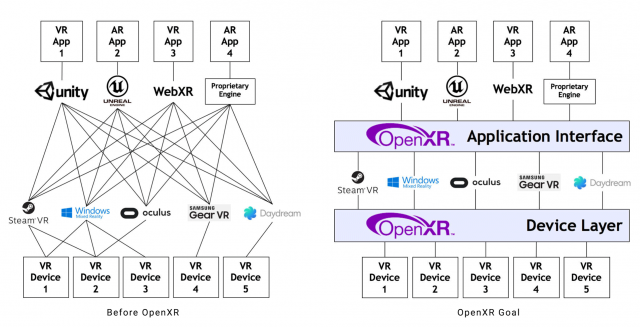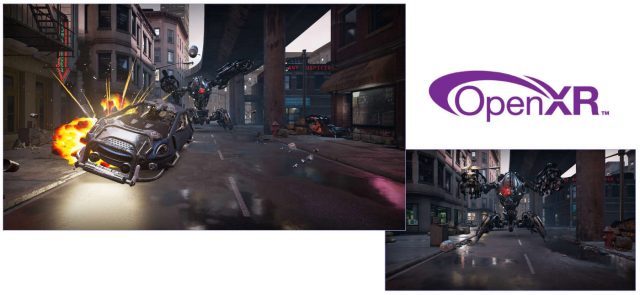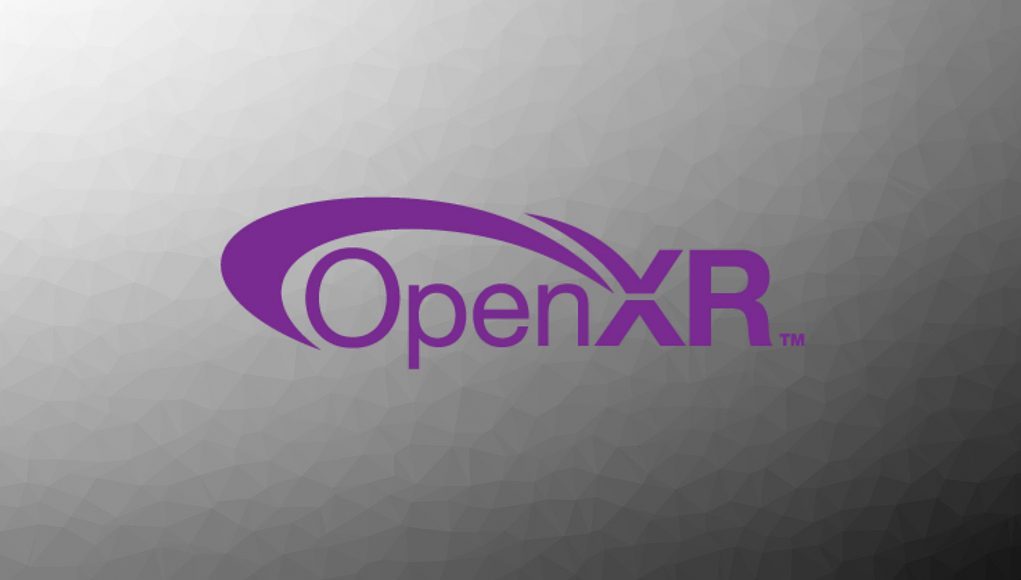Intel’s Brent Insko has taken over as the Chair of the OpenXR working group after Epic’s Nick Whiting passed the torch. The pair say the OpenXR effort is still going strong, and a progress update is planned for March.
OpenXR is a work-in-progress standard that aims to unify the underlying connections between VR and AR hardware, game engines, and content, making for a more interoperable ecosystem. The standard has been in development since April 2017 and is presently supported by virtually every major hardware, platform, and engine company in the VR industry, including key AR players like Magic Leap. OpenXR’s ‘working group’, under which representatives from member companies are actively developing the standard, is facilitated by Khronos Group.

The OpenXR working group has been chaired from the start by Nick Whiting from game & engine maker Epic Games. Citing additional responsibilities in his role at Epic, Whiting tells Road to VR that he stepped down as chair in late 2018, though the company is still fully committed to OpenXR.
“I’m honored to have had the opportunity to serve as the chair of Khronos’ OpenXR working group for just shy of two years. Upon taking on a number of new initiatives at Epic Games, I saw a clear opportunity to pass the torch, and the group elected Brent Insko of Intel as the new chair when he stepped up to answer the call,” says Whiting. “The spec is in great hands with Brent and the OpenXR working group, and Epic remains just as committed as ever to the standard. We’re continuing to actively participate in all the [OpenXR] working group online and in-person meetings, and of course, continuing work to add support for OpenXR to Unreal Engine 4.”
Taking over as Chair of the OpenXR working group is Brent Insko, Lead Software Architect at Intel’s Virtual Reality Group. Inkso has been part of the group since its inception.
“[I want to] first thank Nick for his leadership of the group and getting us this far. As the newly elected chair, I’m excited by the opportunity to help drive OpenXR to its initial release and beyond,” Insko says. “The 30+ member companies continue working feverishly to deliver a specification that removes the major complications of writing portable VR and AR applications.”
In August 2018, members of the OpenXR working group presented a detailed overview of the OpenXR architecture. The group also showed the first live demo of OpenXR in action. Built with Unreal Engine using an OpenXR plugin, Epic’s ‘Showdown’ demo, was shown running on both a Windows Mixed Reality headset and a StarVR headset.

This showed one of the core elements of OpenXR: that developers can design their applications around a single API, and have it run on multiple headsets without dealing with multiple vendor-specific APIs. Conversely, a hardware maker targeting the OpenXR standard could count on the ability to tap into a body of existing OpenXR content, lowering the barrier to entry into the market, and expanding choices for consumers.
“Our Showdown demo running on OpenXR with Windows Mixed Reality and StarVR headsets was just the beginning, and we remain fully committed to OpenXR as the defining open standard for XR,” Epic’s Nick Whiting tells Road to VR.
Indeed, Intel’s Brent Insko says that the OpenXR working group plans to provide a progress update on development of the standard at the Khronos Developer Day on March 19th at GDC 2019.







